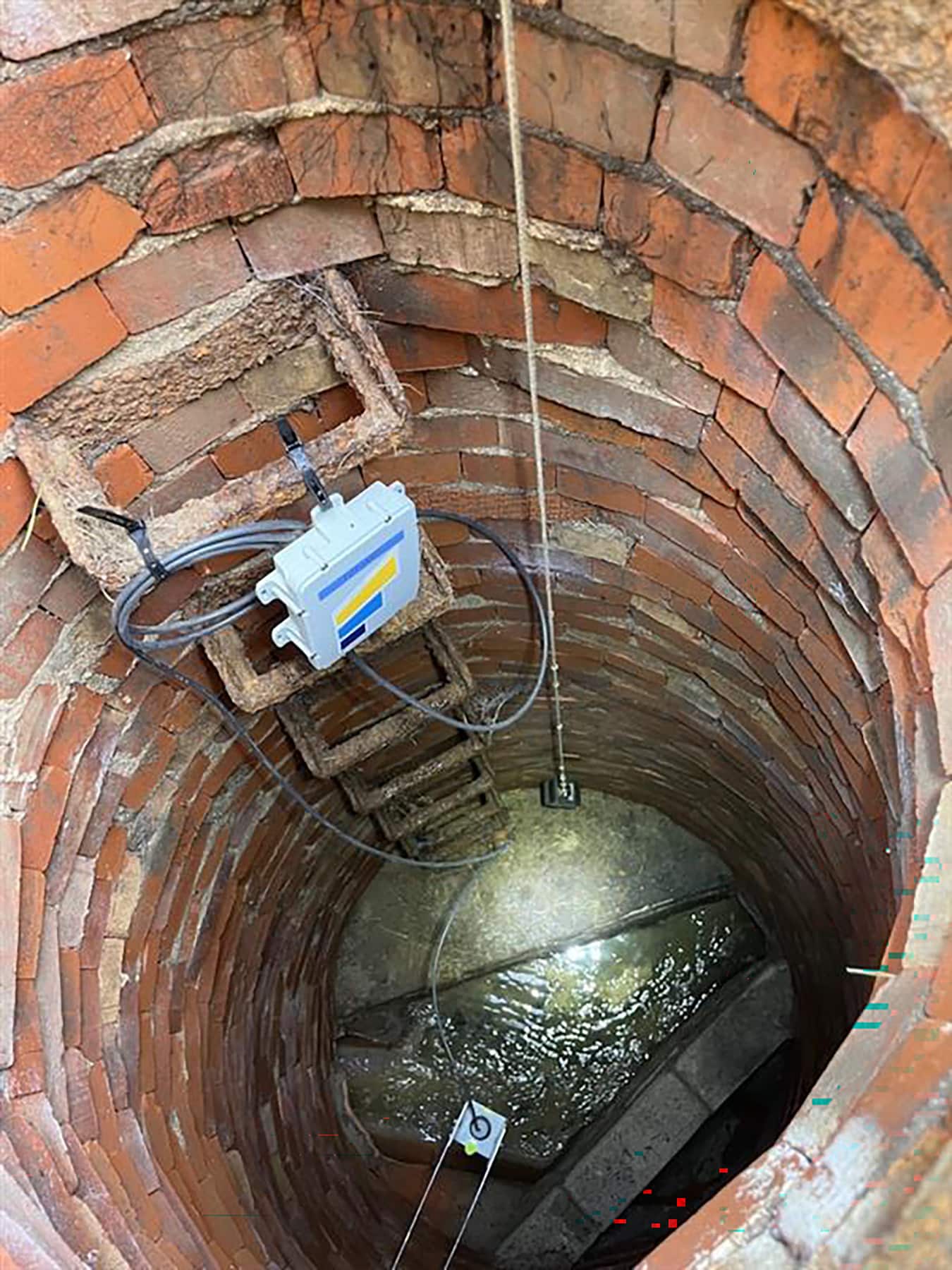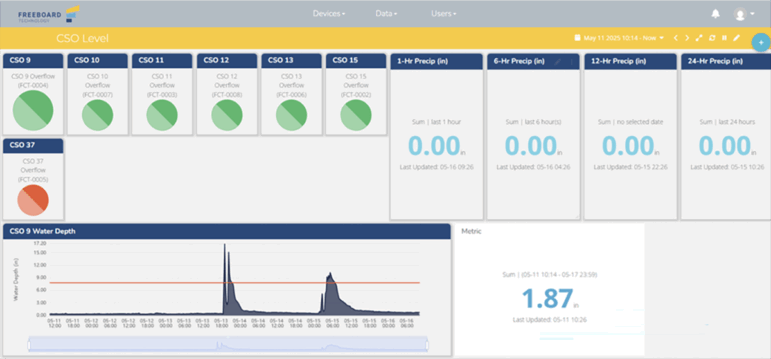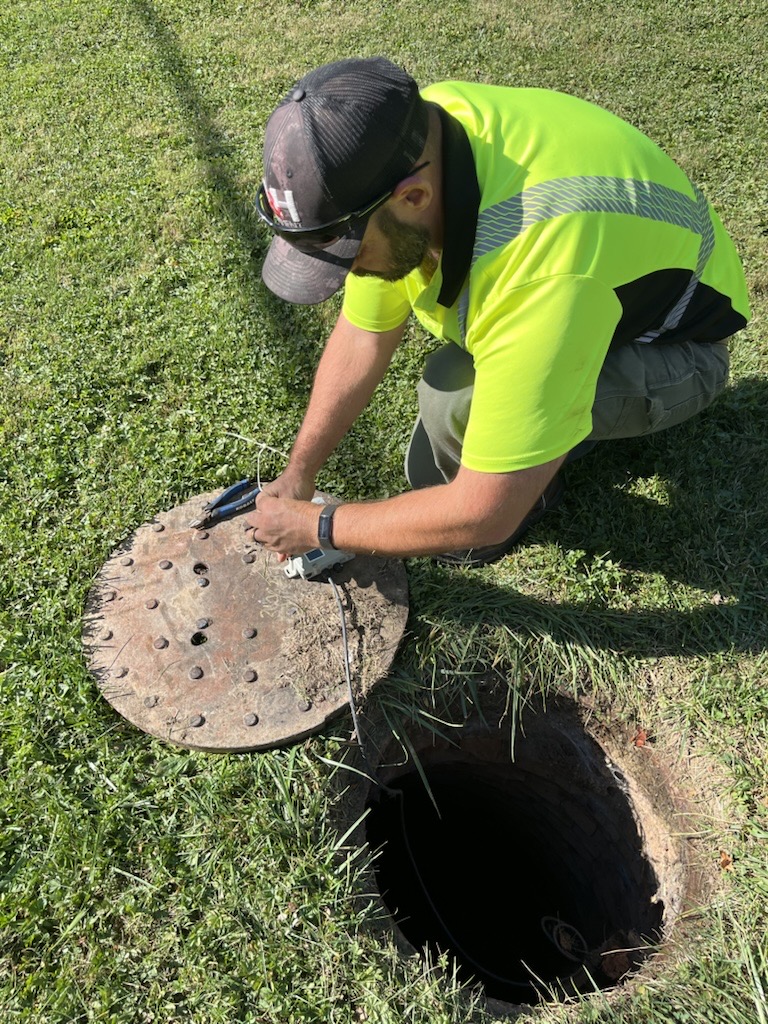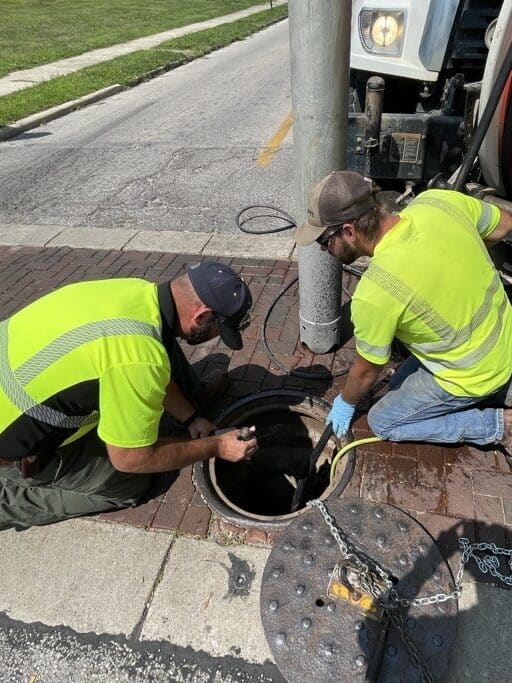In 2024, the City of Tiffin, Ohio, partnered with Freeboard Technology to explore innovative solutions for monitoring water levels within its combined sewer system.
Like many municipalities, Tiffin faces the challenge of managing a system where stormwater runoff, domestic sewage, and industrial wastewater all flow through a single pipe. Under normal conditions, everything is directed to the wastewater treatment plant. But during heavy rainfall, the system can become overwhelmed—leading to combined sewer overflows (CSOs) that discharge untreated water directly into nearby rivers.
Until recently, the city would detect these overflows through manual visual inspections—a time-consuming and reactive approach.
That changed with the introduction of Freeboard Technology’s radar-based level sensor and cellular data logger. This cutting-edge solution enabled the City of Tiffin to monitor sewer levels with millimeter accuracy and near-real-time responsiveness. A rain gauge was also added to the system, providing critical context by correlating rainfall intensity with sewer level fluctuations—giving the city a clearer picture of overflow risks.
With a flexible online dashboard, city staff could customize their view to meet operational needs, making data more actionable and oversight more efficient. A built-in “stop light” indicator offered a quick visual cue when sewer levels approached overflow thresholds. At the same time, a dynamic line chart and overflow height display provided a clear snapshot of system performance over the past week.
Beyond overflow detection, the network of level sensors also proved valuable for identifying maintenance issues. On two separate occasions, the system detected overflow events occurring without any rainfall. A clog caused one, and a collapsed section of pipe caused the other. Thanks to early detection, both issues were resolved quickly—preventing larger backups and minimizing potential damage.
Tiffin is now better equipped to protect its waterways, respond proactively to overflow events, and make informed decisions about infrastructure improvements.








